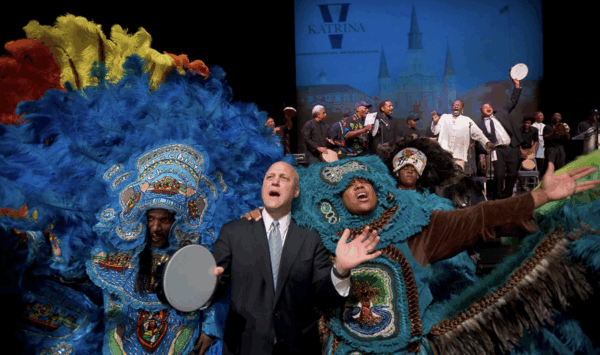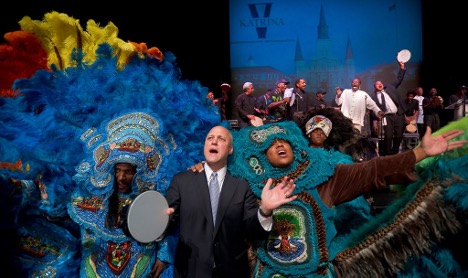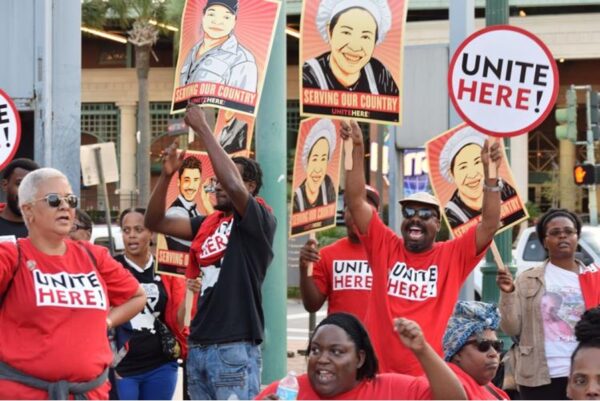What Comes After Liberalism?

Justice Sotomayor’s dissent reflects some of the best principles, the most attractive values, of a liberalism—liberal capitalism—that we on the left have been criticizing for a century. And central to our critique has been the idea that the effort to reconcile labor and capital at the heart of this liberalism has been doomed to failure. What do we do now that we’re proven to be right?
Issue #52: Missing New Orleans: Twenty Years Since Hurricane Katrina (Part Two)

This double issue invites readers to come to terms with how New Orleans has been remade in the interests of the investor class—a shifting constellation of local and national corporations, developers, government officials, think tanks, and pundits—even as they’ve leveraged authenticity and nostalgia to placate dissent, and how the battle for a more just city is yet to be won or even waged in any sustained way. As a collection of essays, written in response to recovery efforts over the last two decades, When the Investor Class Goes Marching In is addressed explicitly to questions of political economy, describing how a recovery project driven by propertied interests has fostered an extreme housing affordability crisis, and makes the case for why decommodification of housing should be the centerpiece of popular left politics in the Crescent City and beyond.
What’s Left for New Orleans? The People’s Reconstruction and the Limits of Anarcho-Liberalism (2019)

Why was the left so unsuccessful in crafting a powerful alternative to the agenda of the city’s business elite? A partial answer to this question can be found in the balance of class forces in the city after Katrina, where the very constituencies who might have written a different story of recovery—public workers, unionized teachers, and public housing residents—were banished from New Orleans.
Whose City is It? Hurricane Katrina and the Struggle for New Orleans’s Public Housing, 2003–2008 (2012)

The obstacles public housing residents faced were not accidental or due to government foul-ups or inefficiency. Rather, they were intentional and made perfect sense in light of the blueprints drafted by political and economic elites for a new New Orleans in the aftermath of Hurricane Katrina.
Issue #51: Missing New Orleans: Twenty Years Since Hurricane Katrina (Part One)

This double issue invites readers to come to terms with how New Orleans has been remade in the interests of the investor class—a shifting constellation of local and national corporations, developers, government officials, think tanks, and pundits—even as they’ve leveraged authenticity and nostalgia to placate dissent, and how the battle for a more just city is yet to be won or even waged in any sustained way. As a collection of essays, written in response to recovery efforts over the last two decades, When the Investor Class Goes Marching In is addressed explicitly to questions of political economy, describing how a recovery project driven by propertied interests has fostered an extreme housing affordability crisis, and makes the case for why decommodification of housing should be the centerpiece of popular left politics in the Crescent City and beyond.
When the Investor Class Goes Marching In: Twenty Years of Real Estate Development, Privatization and Resiliency in New Orleans

What the storm and the sheer devastation wrought in its wake made possible was the consolidation of this ideological transformation virtually overnight—as city boosters, public officials, wealthy developers, private contractors, multinational hotel chains, anti-poverty researchers, entertainment conglomerates, and charter school advocates coalesced to promote a vision of wholesale privatization.
Missing New Orleans: Twenty Years Since Hurricane Katrina – Editorial Note

We still find it hard to believe that twenty years have passed and that there are many New Orleanians and Americans, for that matter, with little or no recollection of the disaster. This collection is intended as a primer for those unfamiliar with this catastrophic historic event and its manifold social and political impacts on the city and American life more generally.
Charity, Philanthrocapitalism, and the Affect Economy (2013)

The seductive notion that private-sector movements will rectify or redress and respond to the larger problem of disenfranchisement of the poor and the underrepresented in America is powerful, especially for those who see their participation in such movements as a radical alternative to conventional infrastructures of social inequality and who reap the rewards of such action.
Hazardous Constructions: Mexican Immigrant Masculinity and the Rebuilding of New Orleans (2011)

New Orleans demonstrated that Latino workers’ occupational risk resulted not only from contractors’ discriminatory work assignments but also from federal agency neglect whose outreach efforts focused on workers rather than on employers.
Beyond the Katrina Moment: Exposure and the Political Economy of Invisibility after the Levee Failures (2025)

While the storm may have exposed the so-called invisible poor and the destitute living condition of America’s most poverty stricken and disrepaired major city, it in fact furthered the connection between the political economy of invisibility and economic dislocation.
